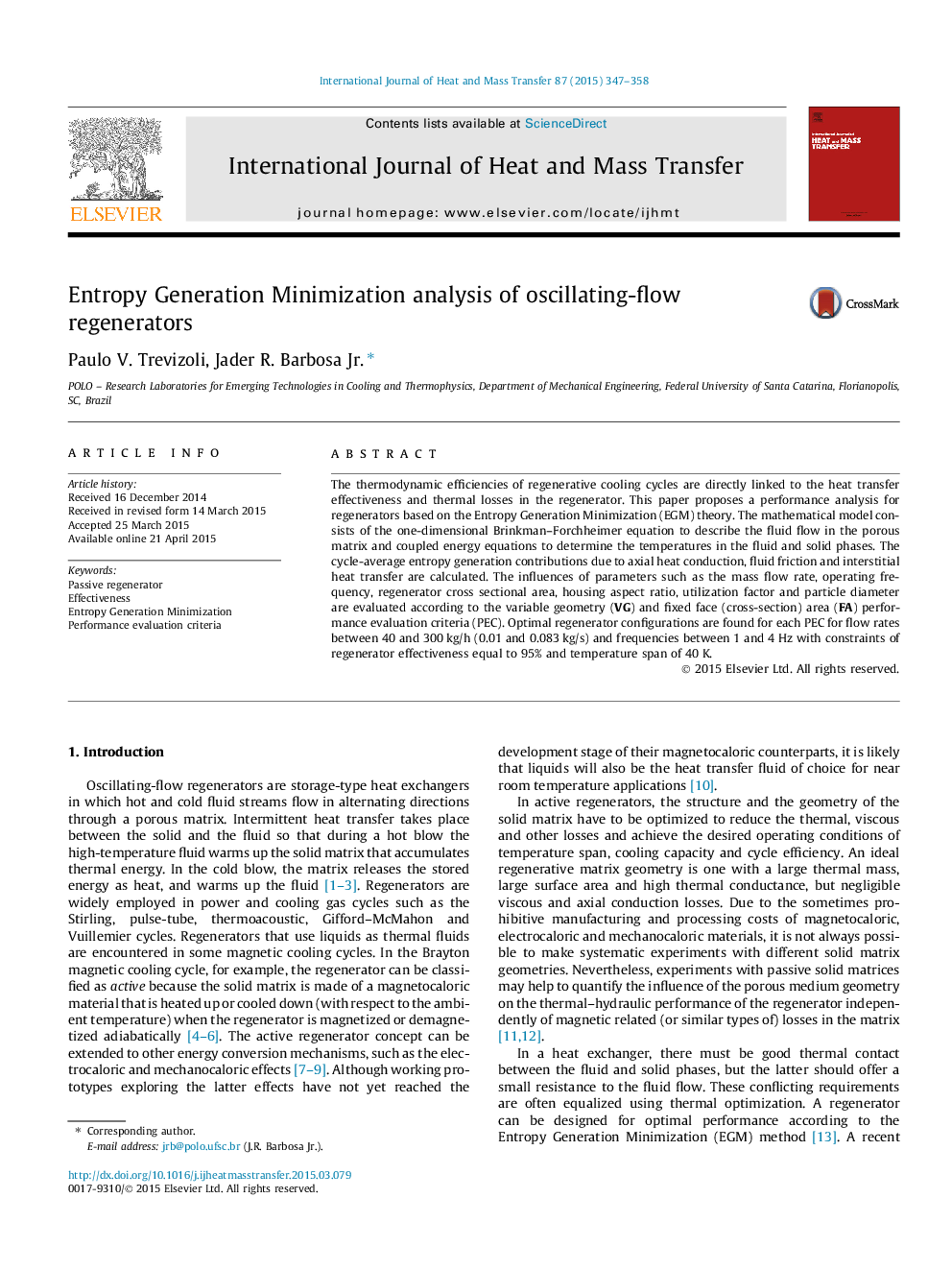| Article ID | Journal | Published Year | Pages | File Type |
|---|---|---|---|---|
| 657122 | International Journal of Heat and Mass Transfer | 2015 | 12 Pages |
Abstract
The thermodynamic efficiencies of regenerative cooling cycles are directly linked to the heat transfer effectiveness and thermal losses in the regenerator. This paper proposes a performance analysis for regenerators based on the Entropy Generation Minimization (EGM) theory. The mathematical model consists of the one-dimensional Brinkman-Forchheimer equation to describe the fluid flow in the porous matrix and coupled energy equations to determine the temperatures in the fluid and solid phases. The cycle-average entropy generation contributions due to axial heat conduction, fluid friction and interstitial heat transfer are calculated. The influences of parameters such as the mass flow rate, operating frequency, regenerator cross sectional area, housing aspect ratio, utilization factor and particle diameter are evaluated according to the variable geometry (VG) and fixed face (cross-section) area (FA) performance evaluation criteria (PEC). Optimal regenerator configurations are found for each PEC for flow rates between 40 and 300Â kg/h (0.01 and 0.083Â kg/s) and frequencies between 1 and 4Â Hz with constraints of regenerator effectiveness equal to 95% and temperature span of 40Â K.
Keywords
Related Topics
Physical Sciences and Engineering
Chemical Engineering
Fluid Flow and Transfer Processes
Authors
Paulo V. Trevizoli, Jader R. Jr.,
